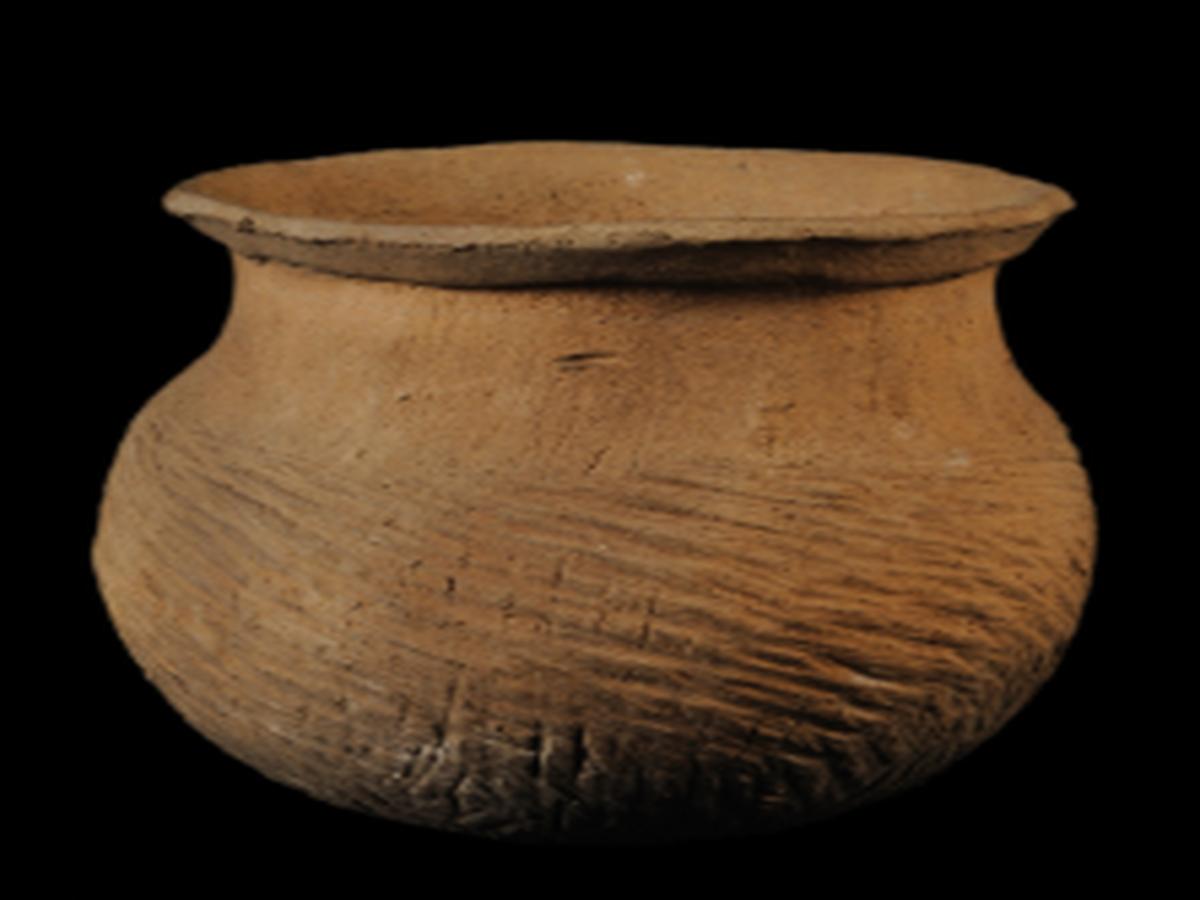State
Tribe Name
Art Type
short description
The Cooking Clay Pot is a traditional earthen pot of the Phom Naga tribe which is primarily a small indigenous community settled in Longleng district of Nagaland, Northeast India. This pot is hand-crafted and speaks loudly of the ancient pottery tradition of the tribe that forms a deep-rooted anchor to its culture and way of living. The pot is made of clay dug within the surrounding area, fashioned, and finally hardened in an open fire pit-the art technique with which the makers have familiarized for generations. It boasts utility as well as artistry in form as it has a broad, circular rim from which one could grip or place a lid. Its shape narrows tightly toward the neck, strongly assisting in heat control when cooking, while the base is made broadly oval for stability over an open fire or on an earthen stove.
Thumbnail

Filter Postion
Left
Filter Background
Off
Theme
Filter Header Image

content
Image

description
The Cooking Clay Pot is a traditional earthen pot of the Phom Naga tribe which is primarily a small indigenous community settled in Longleng district of Nagaland, Northeast India. This pot is hand-crafted and speaks loudly of the ancient pottery tradition of the tribe that forms a deep-rooted anchor to its culture and way of living. The pot is made of clay dug within the surrounding area, fashioned, and finally hardened in an open fire pit-the art technique with which the makers have familiarized for generations. It boasts utility as well as artistry in form as it has a broad, circular rim from which one could grip or place a lid. Its shape narrows tightly toward the neck, strongly assisting in heat control when cooking, while the base is made broadly oval for stability over an open fire or on an earthen stove.
Yet another aspect that distinguishes the pot is the lineal designs engraved or impressed on the body. These simple but graceful patterns are the aesthetic sensibility of the Phom tribe and often represent natural elements or tribal identity. Such designs are usually achieved with sticks, combs, or fingernails just before firing the clay.It mainly uses for cooking rice, vegetables or even meat and hence the main cooking appliance of any Phom kitchen. It is well perceived for providing cooking food with even heat distribution and deliciously tasting preparations, attributes typical in most tribal cooking. Today, the pot is preserved in institutions like the Indian Museum, Kolkata, where one finds a testimony to the richness of cultural treasure and artisanship of this tribal community.
Yet another aspect that distinguishes the pot is the lineal designs engraved or impressed on the body. These simple but graceful patterns are the aesthetic sensibility of the Phom tribe and often represent natural elements or tribal identity. Such designs are usually achieved with sticks, combs, or fingernails just before firing the clay.It mainly uses for cooking rice, vegetables or even meat and hence the main cooking appliance of any Phom kitchen. It is well perceived for providing cooking food with even heat distribution and deliciously tasting preparations, attributes typical in most tribal cooking. Today, the pot is preserved in institutions like the Indian Museum, Kolkata, where one finds a testimony to the richness of cultural treasure and artisanship of this tribal community.
Image Mode
landscape
Image

description
The Cooking Clay Pot is a traditional earthen pot of the Phom Naga tribe which is primarily a small indigenous community settled in Longleng district of Nagaland, Northeast India. This pot is hand-crafted and speaks loudly of the ancient pottery tradition of the tribe that forms a deep-rooted anchor to its culture and way of living. The pot is made of clay dug within the surrounding area, fashioned, and finally hardened in an open fire pit-the art technique with which the makers have familiarized for generations. It boasts utility as well as artistry in form as it has a broad, circular rim from which one could grip or place a lid. Its shape narrows tightly toward the neck, strongly assisting in heat control when cooking, while the base is made broadly oval for stability over an open fire or on an earthen stove.
Yet another aspect that distinguishes the pot is the lineal designs engraved or impressed on the body. These simple but graceful patterns are the aesthetic sensibility of the Phom tribe and often represent natural elements or tribal identity. Such designs are usually achieved with sticks, combs, or fingernails just before firing the clay.It mainly uses for cooking rice, vegetables or even meat and hence the main cooking appliance of any Phom kitchen. It is well perceived for providing cooking food with even heat distribution and deliciously tasting preparations, attributes typical in most tribal cooking. Today, the pot is preserved in institutions like the Indian Museum, Kolkata, where one finds a testimony to the richness of cultural treasure and artisanship of this tribal community.
Yet another aspect that distinguishes the pot is the lineal designs engraved or impressed on the body. These simple but graceful patterns are the aesthetic sensibility of the Phom tribe and often represent natural elements or tribal identity. Such designs are usually achieved with sticks, combs, or fingernails just before firing the clay.It mainly uses for cooking rice, vegetables or even meat and hence the main cooking appliance of any Phom kitchen. It is well perceived for providing cooking food with even heat distribution and deliciously tasting preparations, attributes typical in most tribal cooking. Today, the pot is preserved in institutions like the Indian Museum, Kolkata, where one finds a testimony to the richness of cultural treasure and artisanship of this tribal community.
Image Mode
landscape
promoted
On
Verified
Off
